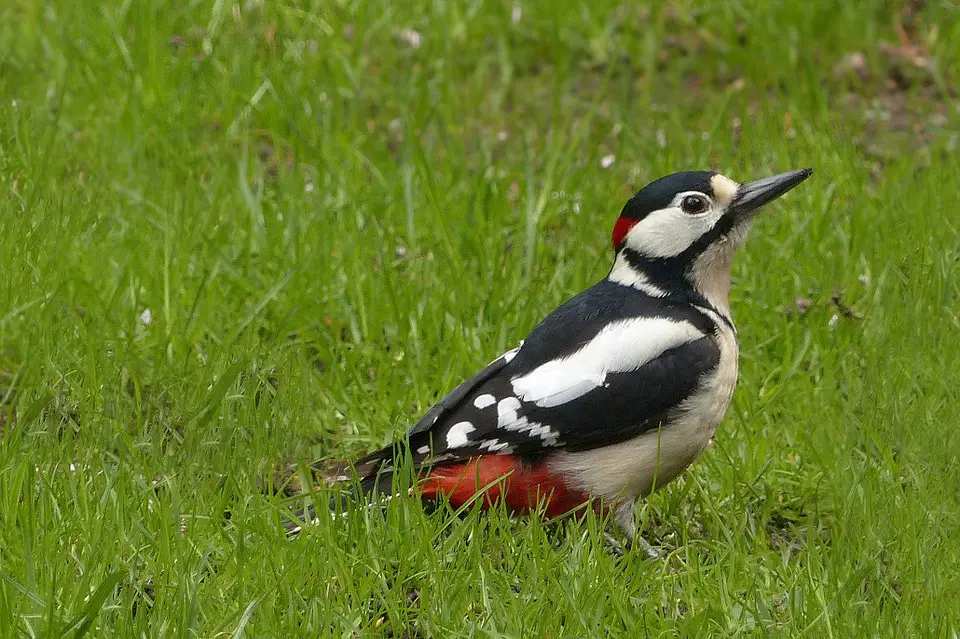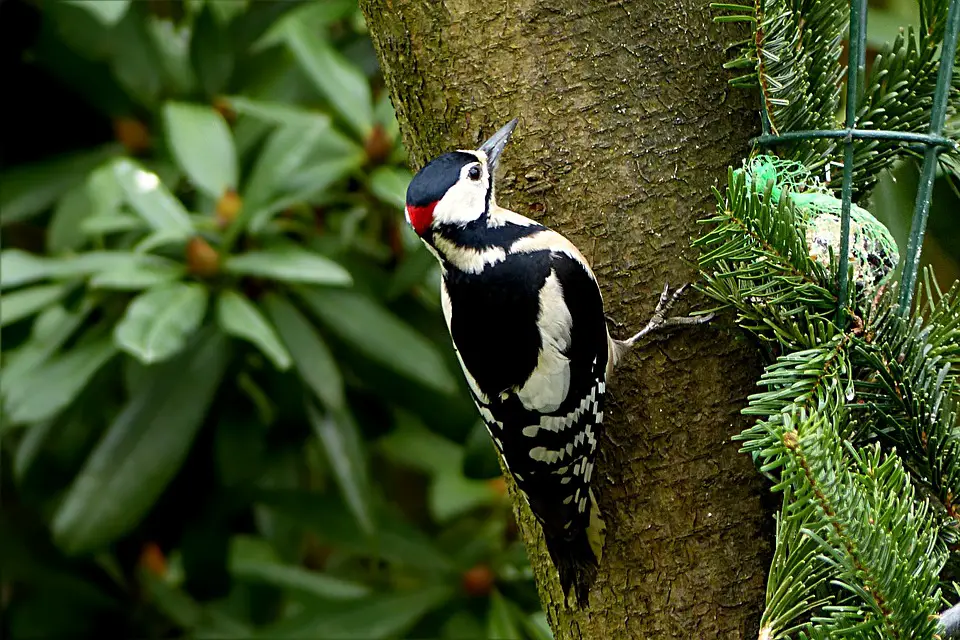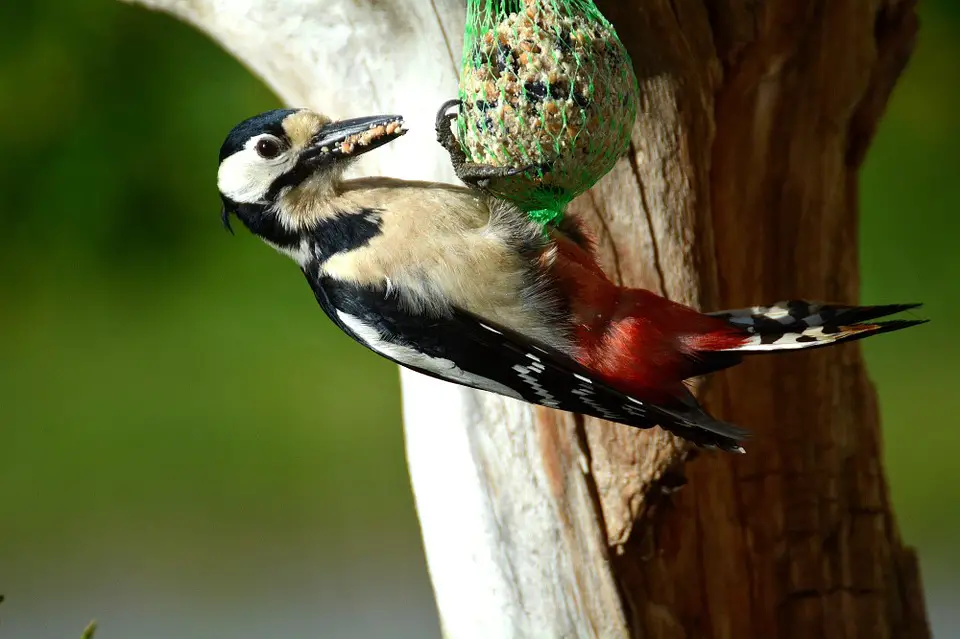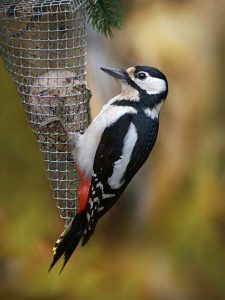When I think of a woodpecker, I automatically imagine Woody, with his bright blue feathers and red plume, hammering away at a tree.
This made me curious; are kingfishers commonplace in the UK, are they blue, and where do I go to see them?
After much research, I realised Woody had pulled the wool over my eyes a little but that the woodpecker is a fascinating bird so I thought I ought to share my knowledge of where to see greater spotted woodpeckers and how to attract them to your garden.
You won’t be surprised to hear that woodpeckers prefer wooded areas. However, they can often be found in small clusters of trees or even singular ones that all have one thing in common, deadwood.
The greater spotted woodpecker has a drill-like beak that is powerful enough to hammer its way through the bark in the hunt for the insects and larvae that inhabit it.
They are very common in most of the British Isles, just not in the northernmost points of Scotland and the majority of Ireland. Although, some pairs are beginning to find their way across to the Emerald Isle.
As with most of our feathered friends, the way to attract them to your garden is via their bellies!
They may still visit if you don’t have a tree but offer a regular source of their other favourite foods; peanuts, suet, and sunflower seeds.
Table of Contents
How to Recognise a Greater Spotted Woodpecker

As the name suggests, there are both greater and lesser spotted woodpeckers in the UK. The greater spotted is the more common and larger bird of which there are approximately 25-50,000 pairs.
Juveniles wear a red cap but as the year passes and they begin to lose their feathers, this will turn to black. They also have speckled black and white shoulder patches.
At a year old when they are fully grown, they are around the size of a starling.
The males and females have a patch of red beneath the tail but only the adult male has a red cape around the nape of his neck. Both sexes have black and white speckled bodies.
These features make the birds and their sex easily distinguishable throughout their life.
The noise they make is instantly recognisable when they are hunting for food, the repetitive fast drumming sound of the beak on wood. They also have a call, just a short singular burst.
Which Trees do Woodpeckers Prefer?

They really aren’t fussy. A tree that is dying or dead is their main requirement, that way the wood is softer and easier for them to break into. Cedar and pine are softer than other typical hardwoods such as oak and maple. But they will nest and forage in any tree.
They will choose a tree to nest in that has a good source of food. They love bark lice and wood borers which are plentiful in soft bark.
Bark lice – Miniscule brown insects that look like aphids. They are soft-bodied and packed with nutrients. They are not harmful to humans or pets.
Wood-borers – Species of beetles that as larva tend to eat wood and cause devastation to the timber. Gardeners love woodpeckers eating the little blighters.
Their method for catching them is fascinating. Once they have bored the hole with their toughened beak, they reach into the hole. If the insects try to bury deeper to escape capture, the woodpecker can unfurl extra tongue that is coiled at the rear of its skull. Ingenious!
The hammering noise also acts as a deterrent to other woodpeckers as it is used to stake their claim on their territory.
If we were to bang our nose constantly against a hard surface we would surely suffer after-effects. The woodpecker doesn’t, instead, the well-engineered beak features integrated shock absorbers that relieve the pressure.
How to Attract a Greater Spotted Woodpecker to your Garden

There are many ways, here are just a few.
TREES
This may sound obvious, and I suppose it is, but if you live in a wooded area or have trees in your garden then you are more likely to already have woodpecker visitors.
If you have a tree that looks like it is dying, don’t be tempted to dig it out. It can act as an excellent habitat for the woodpecker’s food source and provide much-needed nutrients for our friends.
FOOD
Other than insects and larvae they get from trees, they have particular favourites
- Peanuts; high in fats, an excellent source of energy and calories
- Sunflower seeds; high in nutrients, oily to maintain feathers
- Suet blocks or pellets; high-energy, easily digestible, great for the cold winter months
- Sap; a sweet-tasting high-energy food that quenches thirst
- Apples; a hungry will sometimes try to get into an apple on the lookout for bugs
They will also help themselves to any available berries in the garden if the weather is cold and there are no bugs to be had.
NESTING BOXES
If you have bird boxes in the garden the greater spotted woodpecker will be drawn to them, maybe not for the reasons you might think.
His nest will already be high in a tree, he will be looking to steal the eggs or young of other birds. Not to raise and nurture as his own, but to eat!
He uses the strong beak to enlarge the entrance hole on the box until it is just big enough for him to get in. He will pull on the nesting material and take anything that comes with it, eggs and newborn. He will either eat them immediately or store them for a later date.
To prevent this from happening, choose a nest box with a metal ring around the doorway and foil his cunning plan.

And finally
Now that you know how to attract greater spotted woodpeckers to your garden, I wish you much success.
There are few greater noises to hear than a woodpecker drilling away at a tree whilst you’re relaxing in the garden. You might think that they are harming the tree but there is little evidence of this.
He’s not always foraging for food when he’s hammering you know, sometimes he will be hollowing out a space to breed and raise his young. They require no additional bedding, they simply rely on the wood chippings that have been pecked off, they are admirable and tough birds.

We live in Warsaw Poland and we have many different birds that visit us all year round we have now the blue and great tits, robins, blackbirds, jays, sparrows pigeons, doves,woodpecker, bullfinch, thrush, nuthatches,,magpies,,goldfinch, chaffinch,, yellowhammer